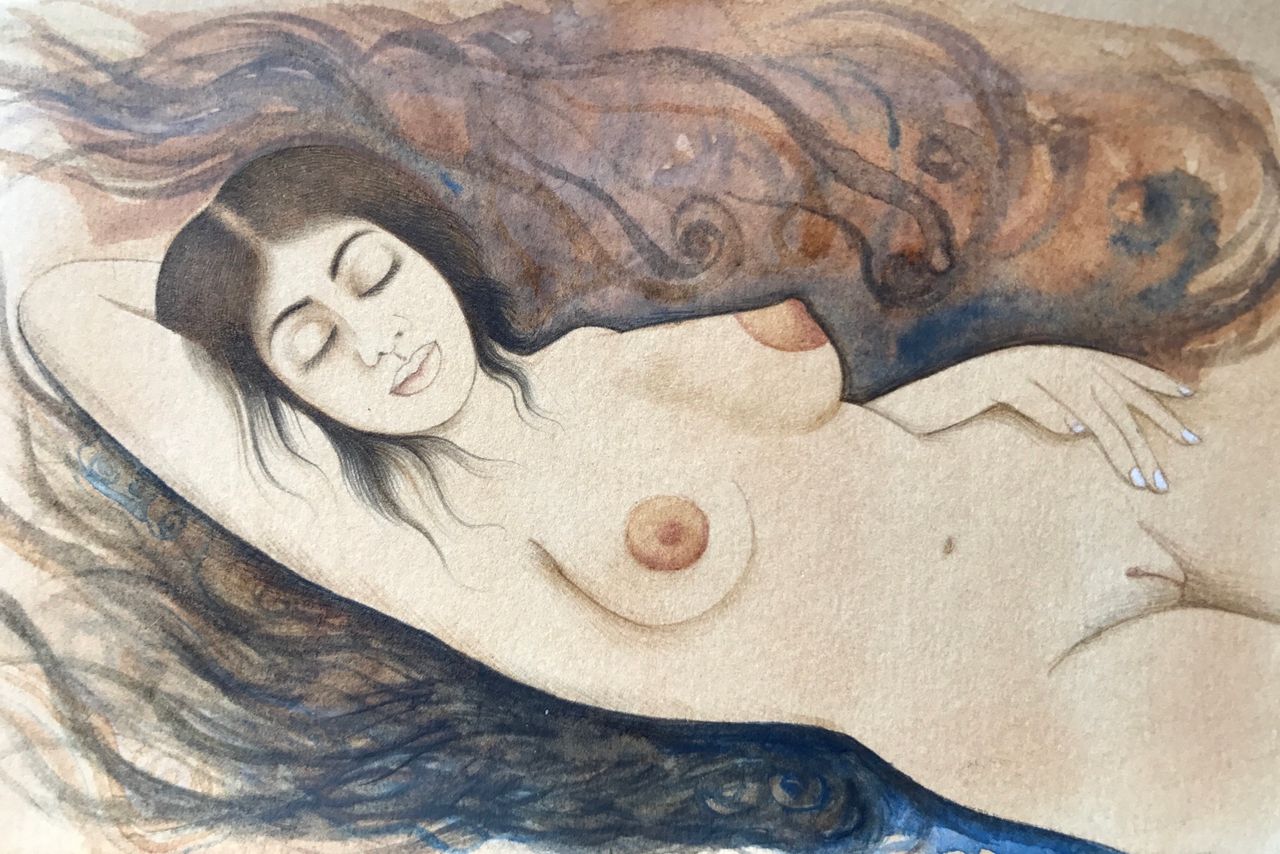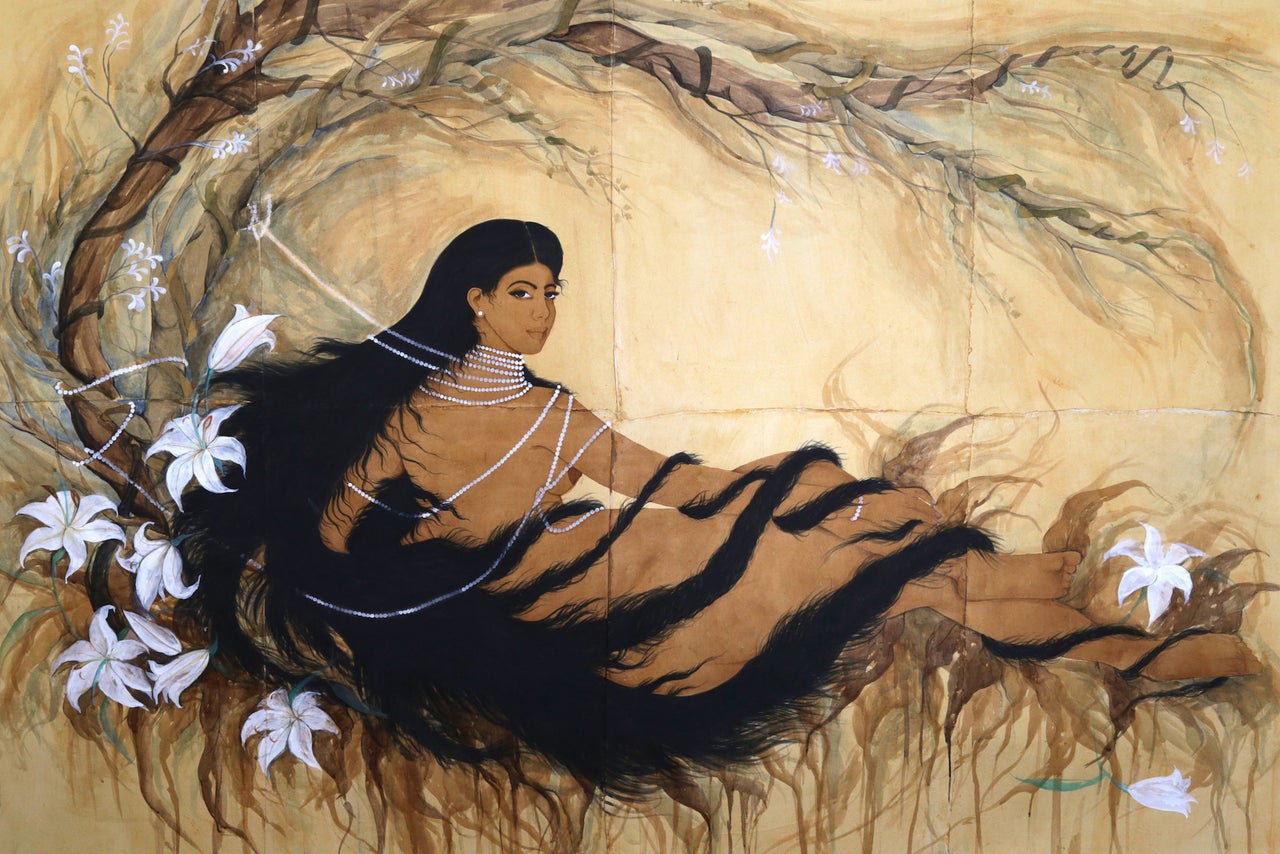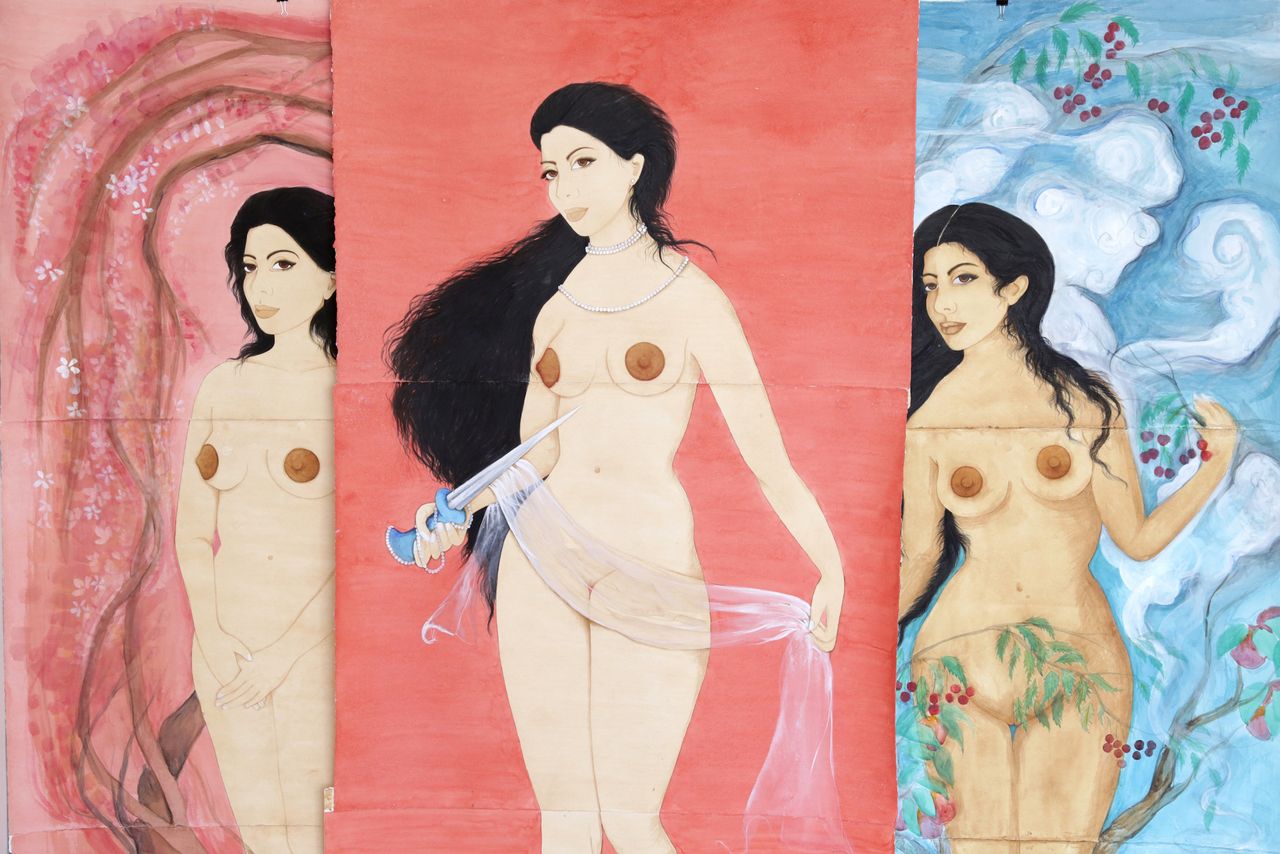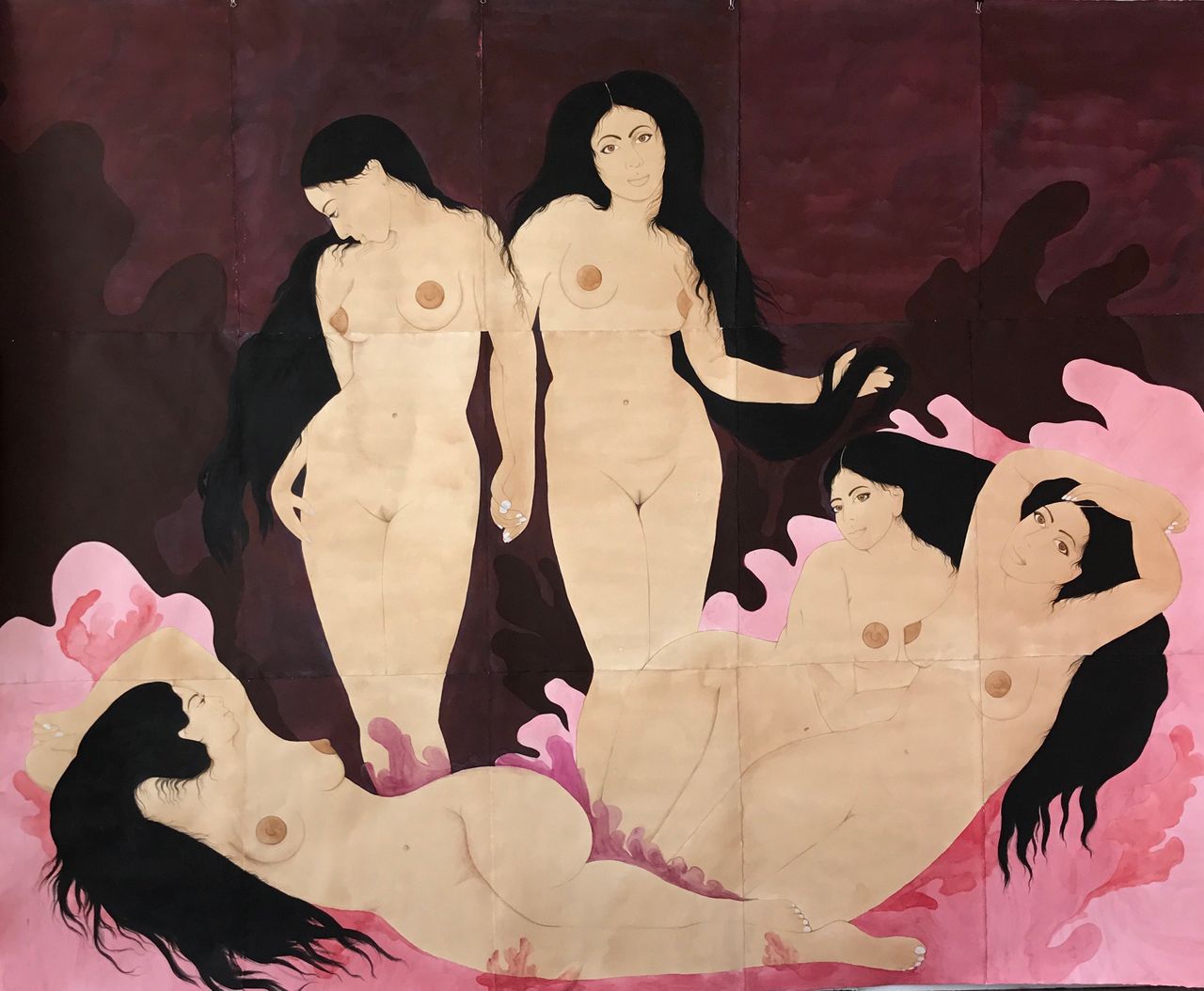Growing up in Pakistan, it was virtually impossible for artist Hiba Schahbaz to find a woman to pose nude as her subject. And so she took on the job herself.
As a preteen, Schahbaz stood naked before her mirror, pen and paper in hand, outlining the shape of her physical form. The act, not to mention the work it produced, was a stark departure from the conventions of her traditional Muslim family. “Women painting themselves naked is seen as very unholy,” Schahbaz told The Huffington Post. To save face, Schahbaz primarily painted women without faces, so their likenesses wouldn’t immediately recall her own.
Artists of Islamic faith have a long tradition of creating subjects without naturalistic faces, the stylized results resembling the style of animation. The artistic convention stems from the belief that realistic art represents an attempt to compete with God’s creative prowess. In art school, Schahbaz trained in the centuries-old Indo-Persian tradition of miniature, which complies with this religious conviction. She first began learning the technique as a chapter in the standard art school rotation. But there was something about the ancient artistic ritual that stuck with her ― “it just happened.”

Indo-Persian art tells stories through ornate and delicate scenes, exempt from the laws of nature. “It creates this very unreal kind of world,” Schahbaz said. Landscapes are compressed into total flatness, devoid of highlight or shadow. People appear in profile or three-quarters but hardly ever facing front. When the style originated in the 15th century, most miniatures were made by appointed court painters, who depicted war scenes, royal stages, and the occasional female dancer. Nearly all of them were created by men.
The male-dominated history of miniatures make Schahbaz’s contemporary paintings of feminine, soft power all the more resonant. Although she incorporates elements of Indo-Persian style into her works ― including a flattened surface and intoxicating use of color ― she is most certainly not creating miniatures. Rather, Schahbaz’s paintings stretch from floor to ceiling, her nude subjects dominating viewers with their ample anatomy.
Another detail distinguishing Schahbaz from her classical Indo-Persian predecessors is that, upon moving to Brooklyn six years ago, she began to endow her painted selves with facial features inspired by her own. “I slowly started opening up to the idea of owning my own art,” the artist said. And unlike the miniaturist convention of rendering subjects’ silhouettes, Schahbaz opts for a confrontational, head-on gaze. When you look at a Schahbaz painting, she looks right back.
On the canvas,Schahbaz appears reclining, twirling her hair, wielding a knife and coaxing a snake. Her repeated image adopts a folkloric quality, plucked from any specific time or place and released into a mythic present. In one series, Schahbaz makes a contemporary house her impromptu palace, gazing at her reflection in the bedroom mirror and relaxing in the bath. In another, she tangles her body with nature’s roots and limbs like a primordial goddess. The images are reminiscent of the ornate, melting animation of the 1970s Japanese film “The Belladonna of Sadness,” which conflates female beauty, power, and sadness, though devised in the imagination of a man.

Since moving to the United States, Schahbaz has grown more interested in the history of Western art. One of her early realizations on the subject was that, as with Middle Eastern history, most of the field’s treasured artworks were created by men. This grim reality was on Schahbaz’s mind when she decided to insert herself into the classical canon’s most iconic paintings and paint herself, nude, within them.
For each work, Schahbaz first photographs herself in the posture of “the muse,” then paints her image from the photograph into an adapted version of the scene. As the “Grand Odalisque,” inspired by Jean Auguste Dominique Ingres’ 1814 work, Schahbaz peers over her shoulder while in regal repose. Her floor-length black hair wraps around her body and pearls are strung between neck and tree trunk to serve as a literal choker. Schahbaz told HuffPost she sprained her neck trying to master the pose. “Her position is completely impossible,” she said. The detail only illuminated the larger takeaway that, as Schahbaz put it, “all the masterpieces were basically all painted by dudes, just painting women exactly how they wanted to.”
Schahbaz became obsessed with retracing the steps of famed male artists, repainting herself as Manet’s Olympia, Giorgione’s Sleeping Venus, and Lucas Cranach the Elder’s Lucretia. Even when rendered in the neo Indo-Persion stylized technique, Schahbaz’s dreamlike paintings are more realistic than their prototypes in their ability to depict female anatomy that doesn’t involve any neck straining.

Although there is a political bent to Schahbaz’s work, which puts art’s patriarchal and overwhelmingly white history on blast, her motivations have always been primarily personal. “I think I’ve spent like 90 percent of my life trying to accept that I’m a female and that’s OK,” she said. “I was always a very emotionally closed-off person. I think painting gave me emotional contact with myself.”
Through her work, Schahbaz fuses elements of two male-dominated art histories, injecting a strong dose of feminine energy to bind them together. The paintings explore the history of men assuming control of women’s bodies, whether censoring them, fetishizing them in classical oil paints, or twisting their bodies into poses until their necks break. Through the simple yet radical act of painting her own naked body, Schahbaz confronts unjust histories with creativity, sensuality, bravery, and an abundance of self-love.
“I think just having some acceptance has been a really big deal for me,” Schahbaz said. “I didn’t grow up with feminism, so I have just constantly been told that what I’m doing is really wrong. That I should hide, be ashamed of myself and my body and who I am. Having people in the art world accept that I am a female who has a body who is painting it, it really means a lot.”
“Hiba Schahbaz - Self-Portraits” will be on view from April 5 through May 12, at the Grab Back: Feminist Incubator Space program at Project for Empty Space in Newark, directed and curated by Jasmine Wahi and Rebecca Jampol.



